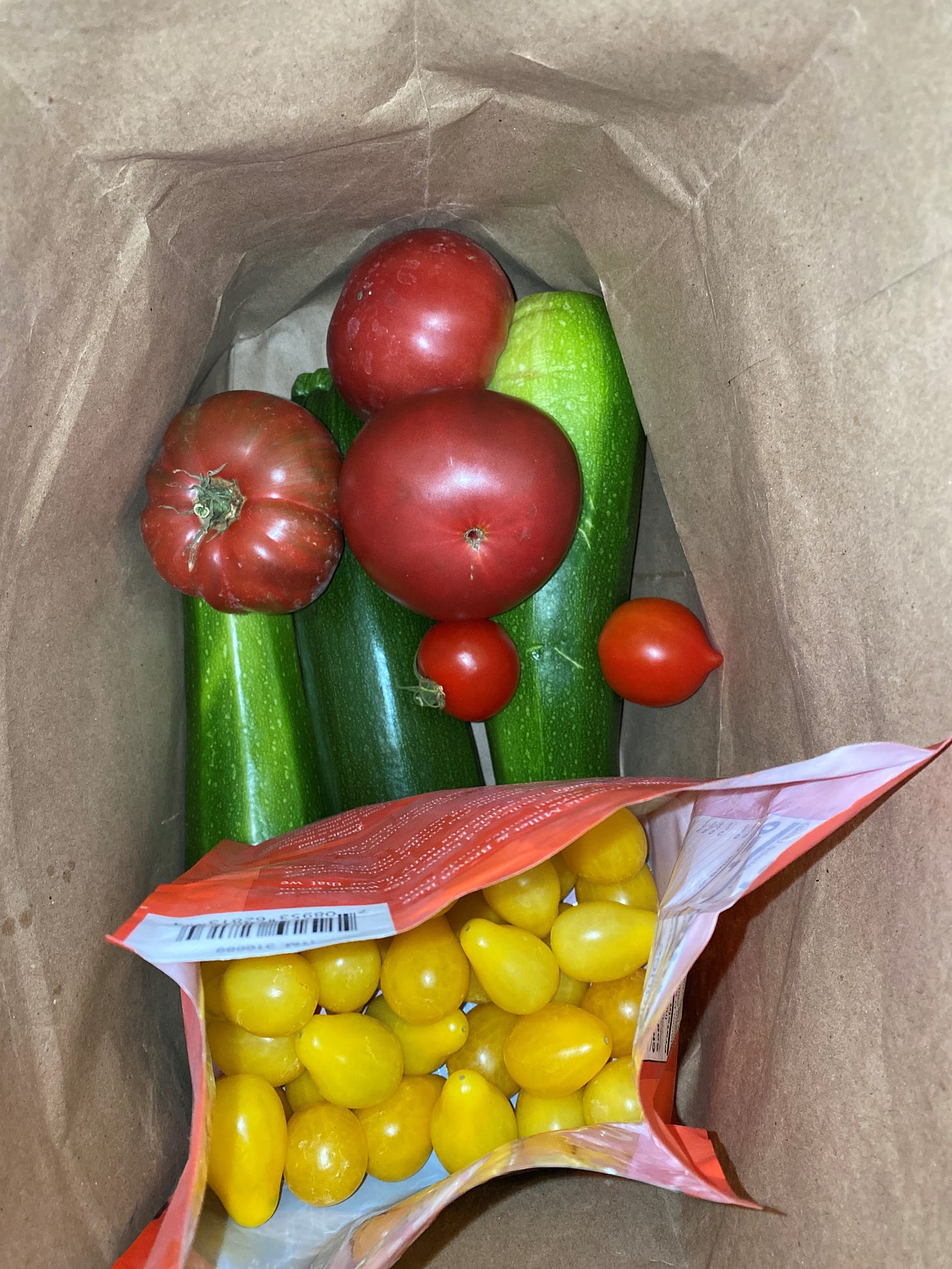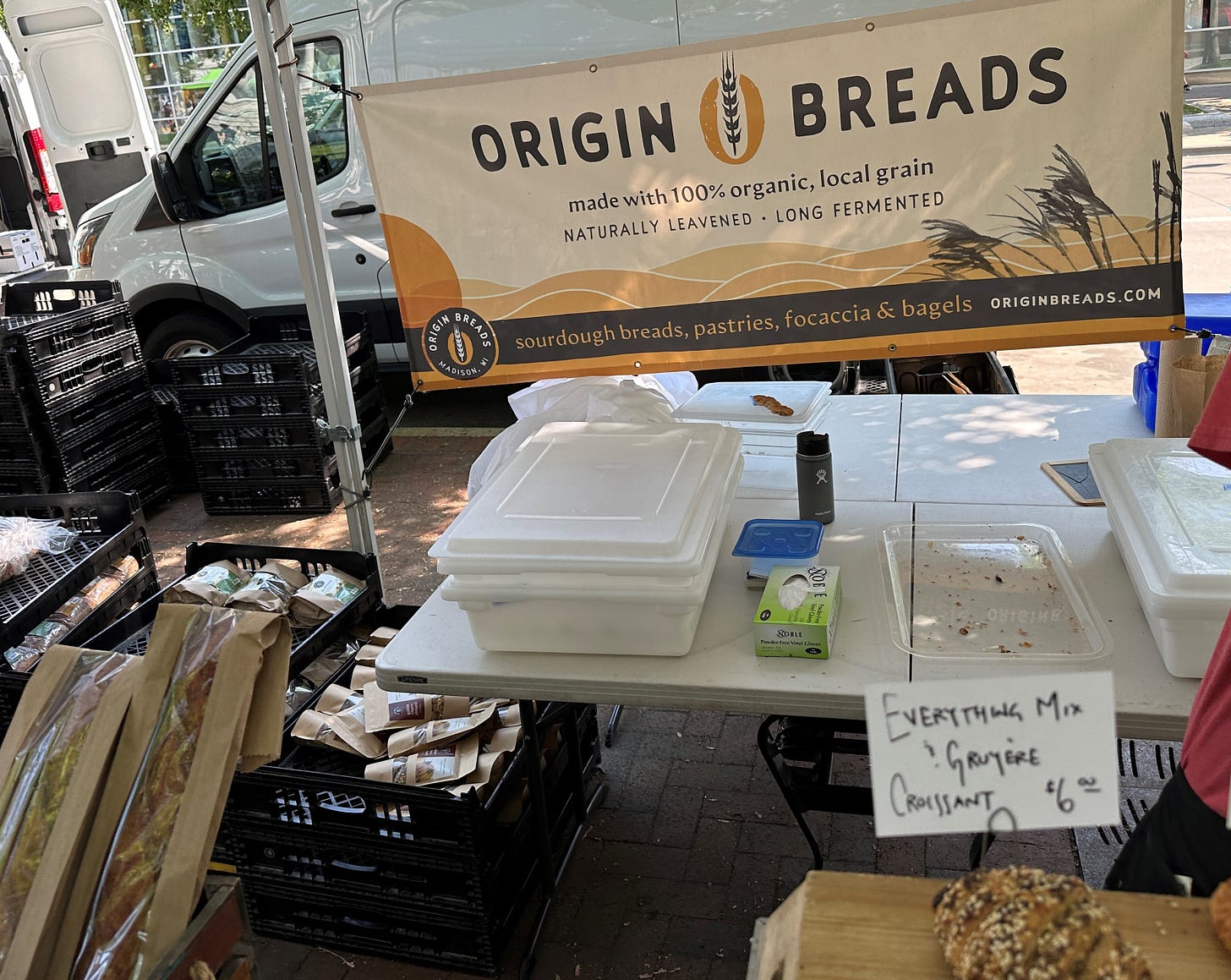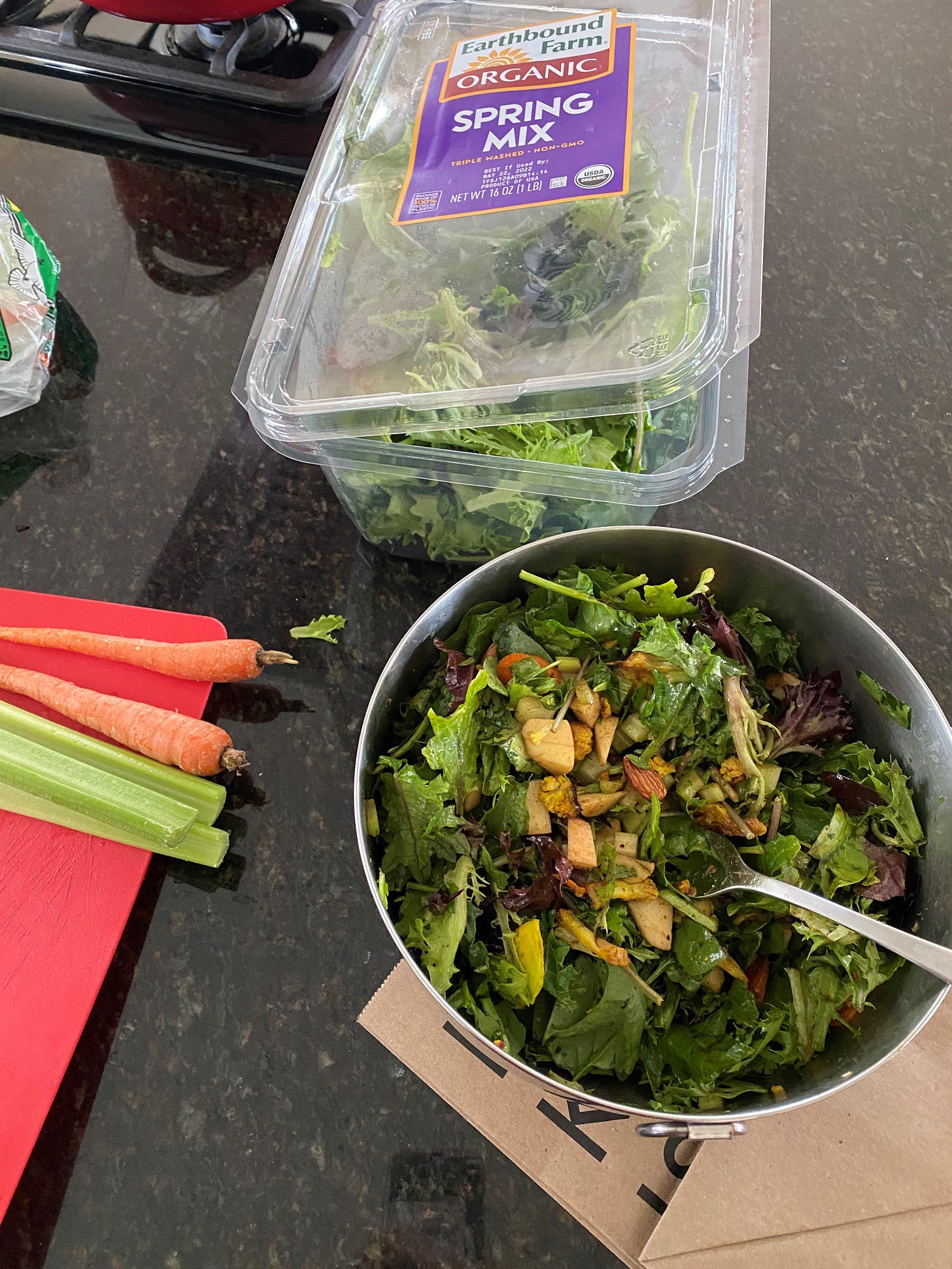2023 Dirty Dozen and Clean Fifteen List
Choosing foods that are best for you and the environment.
Every year the Enironmental Working Group puts out a list of foods with the most pesticide residues and those with the least. This is very helpful for reducing your exposure to pesticides, but it is incomplete. This week I continue the series of short Living Healthy Fully newsletters, so you can quickly get a few jewels as you continue your holiday planning and enjoying.
Announcement: I will be leading a two-week online program on Intuitive Eating in February. I will share more details in next month’s newsletters. Subscribe to learn more.
Summary
In summary, I recommend buying nourishing and tasty foods that are fresh, regeneratively grown/raised, organically grown, in season (or frozen) and not sprayed with herbicides (e.g., glyphosate, atrazine) or chemical pesticides. When possible, I like purchasing from local farmers who I can discuss their farming and soil health practices. Many small farmers—who may not be Certified Organic—frequently follow organic and/or regenerative practices which are better for the environment and your health than many large-scale farms that are Organic Certified.
My prioritized criteria for purchasing foods follows.
Tasty foods that nourish and support my health and my family’s health.
What is most recently harvested and has the least chance of losing its vitality and nutrients. Usually, what is local and freshest. (In some cases, these are frozen foods which are usually frozen within a day of harvest.)
Regeneratively raised or grown. Farmers/ranchers doing truly regenerative practices are farming with nature, supporting the land, building healthy soil, avoiding toxic chemicals, preventing run off, and improving water quality which leads to healthier, more nutrient dense foods. Want to learn the many health and environmental benefits of regenerative foods? Read What Your Food Ate or watch this video by one of the authors.
Unprocessed or minimally processed foods.
I like to buy from farmers markets where I can talk to the farmers and ranchers, and the local co-op or the local butcher shop that is committed to sourcing from regenerative farmers and ranchers.
I choose organic certified next. Both organic and regeneratively grown are usually tastier and have more micronutrients than foods grown with chemical fertilizers, pesticides and herbicides.
When I can’t get organic or their price is too high, I look to the Clean Fifteen List as well as prioritizing foods in season. Most foods in-season foods are less expensive, and if they are grown in season in many cases require less fertilizers and pesticides to grow them. Also, frozen organic berries are frequently less expensive than fresh ones grown in a distant land.
I avoid buying nonorganic produce on the Dirty Dozen List. In addition, I avoid most nonorganic grains and beans that may have been sprayed with Glyphosate as a desiccant to dry them before harvest.
Lastly, I wash all my produce thoroughly before eating it or feeding it to family or friends. I recommend using a good veggie wash to remove additional pesticide residues and potentially unhealthy bacteria.
As you will see from my ranking, I care about taste, nutrient density, and the environmental impact of the foods I buy as much as the health benefits and associated costs.
What are your priorities for choosing healthy foods for you, your family and your friends?
Leave me a comment here or a message at TodWickersham.com.
New Dirty Dozen and Clean Fifteen List
Dirty Dozen list in order of most pesticide residue.
Avoid nonorganic versions of these; buy with the organic certification or from a farmer that does not use chemical pesticides.
Strawberries
Spinach
Kale, collard and mustard greens
Peaches
Pears
Nectarines
Apples
Grapes
Bell peppers and hot peppers
Cherries
Blueberries
Green beans
Other foods I only buy organic certified to reduce consumption of herbicides
Oats, rolled oats, quick oats, oat milk
Wheat, spelt, wheat bread, pasta…
Barley and Rye
Garbanzo beans / chickpeas, humas
Soybeans, tofu, soy milk
Black beans
Pinto beans, refried beans
All other beans/legumes
I also choose organically grown potatoes, tomatoes, tomato sauces, corn meal, and corn chips to avoid the GMO biologically incorporated pesticide that are in many varieties.
The Clean Fifteen with no or low levels of pesticide residue
Avocados
Sweet corn
Pineapple
Onions
Papaya
Sweet peas (frozen)
Asparagus
Honeydew melon
Kiwi
Cabbage
Mushrooms
Mangoes
Sweet potatoes
Watermelon
Carrots
Source: EWG's 2023 Shopper's Guide to Pesticides in Produce and Mercola.com
Learn More
If you want more energy, health and joy in your life or have questions about this newsletter or my services, leave me a comment here or contact me through TodWickersham.com.
Best of Health,
Tod Wickersham, CFNC, FNLP
Certified Functional Nutrition Counselor & Regenerative Health Coach
Beneficial Results LLC | TodWickersham.com
Live Healthy to Live More Fully!
Instagram LinkedIn Facebook YouTube Substack
Disclaimer
THE INFORMATION TOD WICKERSHAM/BENEFICIAL RESULTS LLC PROVIDES YOU IS FOR INFORMATIONAL PURPOSES ONLY AND IS NOT MEDICAL ADVICE OR INTENDED TO DIAGNOSE, TREAT, PREVENT, CURE OR PRESCRIBE FOR ANY COMPLAINT, CONDITION, OR SYMPTOM. ANY PERSONAL MEDICAL OR HEALTH QUESTIONS SHOULD BE ADDRESSED TO A QUALIFIED HEALTHCARE PROVIDER.






